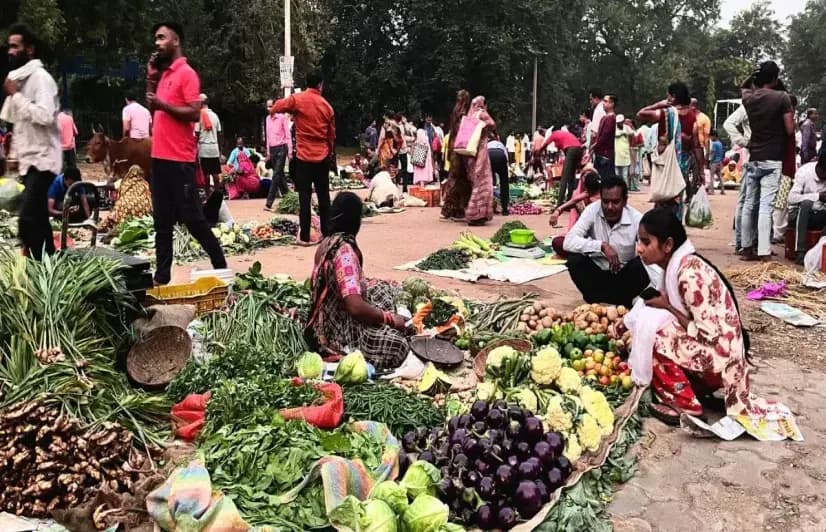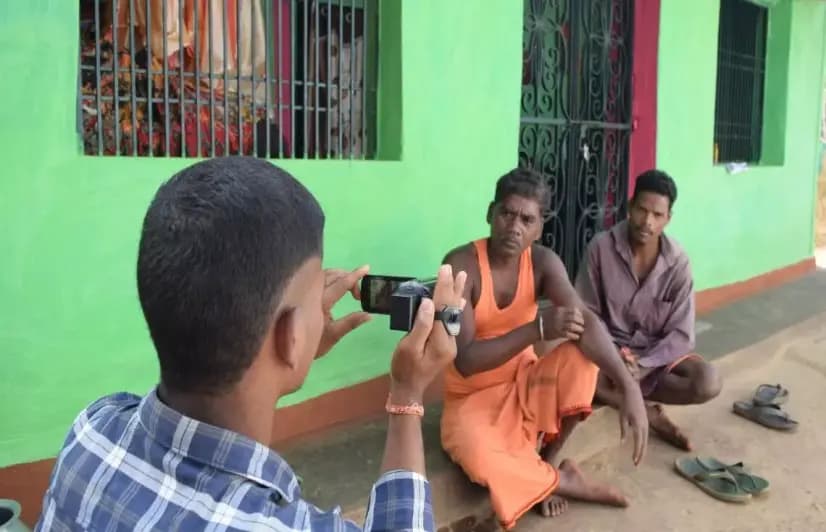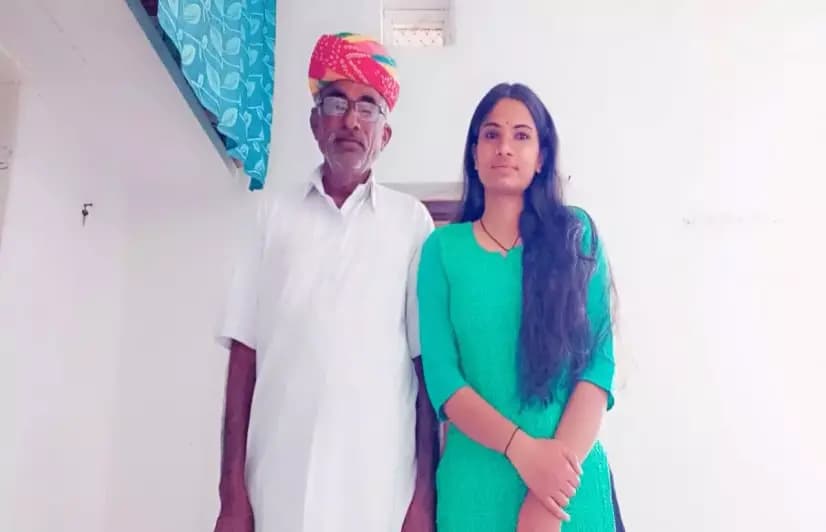Windfall for farmers as Chhattisgarh’s paddy politics paves way for increased production, higher returns
.webp&w=3840&q=100)
Windfall for farmers as Chhattisgarh’s paddy politics paves way for increased production, higher returns
The newly elected government offers Rs 3,100 per quintal, which triggers procurement of 144.92 lakh metric tonnes of paddy produced in the kharif season
Raipur, Chhattisgarh: Farmers’ march to Delhi to ensure minimum support price (MSP) for their produce is fresh in our minds, but the government in Chhattisgarh recently surprised everyone by offering a much higher price for paddy than what was recommended by the Swaminathan Commission.
Prior to last November’s Assembly elections, the Bharatiya Janata Party (BJP) had pledged to buy paddy from farmers at Rs 3,100 per quintal. Following its election win, in December, the government also decided to offer Rs 19,257 per acre as a deficiency payment to paddy growers.
The preceding Congress government had ensured Rs 2,500 per quintal, and an additional Rs 10,000 per acre of paddy under the Rajiv Gandhi Kisan Nyay Yojana.
Jeevraakhn Dhruv (67), a resident of Matka village in Chhattisgarh's Bemetara district, never imagined that his paddy would fetch such a lucrative price. He sold approximately 170 quintals to the government once the hike in payment came into effect last month.
Besides the MSP of Rs 2,183 per quintal fixed by the Centre, Dhruv got an additional amount of Rs 1,57,357 under the Krishi Unnati Yojana on March 12. "Many household works are pending. This money will be used to complete them," he says.
Like Dhruv, 1.54 lakh paddy growers in Bemetara district have been paid a total of Rs 854 crore. At the state level, 24.72 lakh paddy farmers have received a total of Rs 13,320 crore so far this year.
According to the last agricultural census of 2015-16 in Chhattisgarh, the number of farmer families in the state is 40,10,772. Of them, the number of farmers having less than one hectare of land is 24,34,321 and those with one to two hectares is 8,79,477.
Indra Kumar, a farmer from Abhanpur in Raipur district, has less than half a hectare of land. This year, he sold 20 quintals of paddy. "Generally, paddy is sold in the open market at Rs 1,200 to 1,500 per quintal. However, the government is purchasing it at Rs 3,100, which is almost double of what is offered in the open market. I have decided to get the house repaired using the money received," he says.
Bonus over the years
During the BJP's tenure in 2013-14, Chhattisgarh took the initiative to provide farmers a bonus of Rs 300 per quintal over and above the then MSP of Rs 1,310 per quintal. This continued in the next two fiscals as well. However, in the last two years of its rule, the government did not provide the bonus.
Riding high on its Rs 2,500 per quintal promise, the Congress won a majority in 2018 to form the government. Its implementation motivated farmers to produce more paddy. As per the state government data, from 15,77,332 registered farmers selling paddy in 2017-18, their numbers increased to 25,93,000 by 2022-23. Similarly, the area under rice cultivation increased from 24.46 lakh hectares to 31.17 lakh hectares during that period.
According to the agriculture department's data, the state government procured 56,88,347 metric tonnes of paddy from farmers in 2017-18. However, this figure nearly doubled to 1,07,51,858 metric tonnes in 2022-23. This made Chhattisgarh, a significant contributor to the central pool, occupy the second position in the country in terms of paddy contribution.
The purchase of paddy at prices higher than MSP incentivised farmers in the state to grow more paddy instead of other crops. However, they did not pay attention to millets and other crops due to market scarcity, low prices and low yields.
In 2023-24, the Central government announced an MSP of Rs 2,183 per quintal for common grade paddy and Rs 2,203 for A grade paddy. The BJP in Chhattisgarh then promised to purchase paddy for Rs 3,100 per quintal, provided it returned to power. The party also promised to purchase 21 quintals of paddy per acre from farmers.
In Chhattisgarh, farmers with all facilities produce 30 to 40 quintals of paddy per acre, but the government does not purchase the entire production. It buys 21 quintals per acre. For example, if a person has four acres and he/she produces 160 quintals of paddy, the government will buy only 84 quintals from him/her.
Once it came to power last December, all the records of paddy procurement in Chhattisgarh were broken. The state government procured 144.92 lakh metric tonnes of paddy produced in the kharif season of 2023-24 from 24,72,310 farmers. This was approximately 26% higher compared to the previous kharif season.
"Our government has fulfilled the promise. We have transferred Rs 13,320 crore into the accounts of farmers in the month of March. We have proven our words," Chhattisgarh Agriculture Minister Ramvichar Netam tells 101Reporters.
Bouquets and brickbats
Farmer leader Anand Dewangan explains that MSP for paddy procurement nationwide is currently set at Rs 2,183 per quintal, calculated by the Commission for Agricultural Costs and Prices (CACP) using the A2+FL formula. Here, A2 represents the direct expenses incurred by farmers in crop production, while FL stands for the imputed cost of family labour.
“If MSP was calculated using MS Swaminathan's formula, which includes comprehensive costs [C2] plus 50%, the price of paddy would be Rs 2,886.50 per quintal for kharif 2023-24. But in Chhattisgarh, farmers are getting more than even this.”
Farmers in favour of paying higher prices than the recommendations of the Swaminathan Commission argue that the paddy procurement initiatives had a positive impact on their livelihoods. They say that procurement based on MSP assures farmers of a minimum income for their produce, reducing their financial risk. Increased procurement activities contribute to rural development by boosting agricultural income and stimulating economic growth in rural areas.
Arvind Netam, a former union minister of state and tribal leader, tells 101Reporters that paddy growers were given Rs 2,500 per quintal by the previous Congress government of Bhupesh Baghel before the present hike. At that time, it was the highest in the country, except for Kerala. "This time also, farmers knew very well that paddy will be a political card for political parties. That was why paddy cultivators were confident about their future in Chhattisgarh," he notes.
However, agricultural experts have expressed concerns about the potential risks associated with buying paddy at elevated prices. They acknowledge that farmers have warmly welcomed the substantial increase of nearly Rs 1,000 per quintal in deficiency payment, but paradoxically, it poses a significant burden to the tune of Rs 12,000 crore on the state's economy.
Dr Sanket Thakur, an agricultural scientist, tells 101Reporters that every sector has seen a rise in remuneration over the past 70 years, except agriculture. Despite the advancements in services and production, agriculture has not experienced proportional compensation, leading to decades of injustice towards farmers. This hike in remuneration is not only crucial for Chhattisgarh's farmers, but is also deserved by farmers across the nation.
The Centre has already said that paying above MSP is not its policy. If any state overrules this, then the Centre will not purchase its rice for the central pool. Thakur explains that Chhattisgarh has borrowed Rs 12,000 crore to meet the requirements of the incentive amount, which is being distributed under the guise of deficiency payment since it contradicts the Central government's policies. However, the money ultimately comes from the government coffers. Therefore, from an economic standpoint, this approach is not favourable for the state's economy.
Pointing towards the other potential dangers, Thakur says the increased returns have encouraged farmers to focus solely on paddy production, which could have adverse effects from a climatic perspective. “Monoculture is detrimental to soil quality, and crop rotation is a more sustainable farming concept. Additionally, the cultivation of paddy in summer requires substantial water resources, which can exacerbate water scarcity. Furthermore, the overemphasis on paddy cultivation threatens crop diversity, leading to nutritional deficiencies in the long term. Overall, this paddy incentive scheme may have unfavourable implications for the economy, climate and ecological balance,” he predicts.
Edited by Rekha Pulinnoli
Cover Photo - Women working at the field (Photo - Vandana Agrawal, 101Reporters)
Would you like to Support us
101 Stories Around The Web
Explore All News
Jun 11
‘’मलेरियाने माझा मुलगा अन् नवरा बी मेला’’... गडचिरोलीमध्ये तापमान बदलाचा आणि डासांचा काय आहे संबंध?

Jun 11
ओडिशा : जलवायु चुनौतियों से निबटने मैंग्रोव संरक्षण के कार्य में जुटी महिलाओं की कहानी
-5.webp&w=3840&q=75)
Mar 27
A Painful Period In The Salt Pans Of Little Rann Of Kutch
-13.webp&w=3840&q=75)
Mar 27
Madhya Pradesh: Where is Our Free Time?

Feb 02
Dilemma Faced By Poor Farmers In Bundelkhand: Grow Organic While Selling Non-Organic

Feb 02
Giridih saves its village ponds with NITI Aayog's help

Jul 29
Odisha students use mobile cameras and pens to preserve village history
-18.webp&w=3840&q=75)
Jul 29
Rajasthan: Fasal Bima Yojana and the Art of Minimising Payouts
-16.webp&w=3840&q=75)
May 25
Waste to wealth: Bhopal district panchayat spends Rs 75,000 per month to earn just Rs 4.5 lakh a year

May 10
A Victory For Unmarried Rajasthani Women As Anganwadi Positions Open For Them
About the Reporter
Top stories by Vandana Agrawal



Write For 101Reporters
Would you like to Support us
Follow Us On
Editor's Pick
Surviving on mercy: Temporary sanitation workers in rural Tamil Nadu earn less than minimum wage
How Kerala heatwaves are boiling over to construction workers’ personal lives
Empowering didis: In Burhanpur, management of ration shops is boosting women’s confidence and financial independence
No childhood in the mangroves: What is the climate change’s toll on Sundarbans youth
In the remote, tribal villages of Gadchiroli, climate change is breeding malaria
Discontent and misgovernance as Tamil Nadu postpones panchayat elections
Curse of the canal: Seepage and waterlogging lay waste to agriculture in Rajasthan's Luni delta
Assam's ‘left-behind’ women wage lonely, futile battle against extreme floods
'Now we want the chair': Kashmir’s women SHG leaders gear up to fight panchayat elections
Recommended Topics
-2.jpg)
-3.jpg)
-4.jpg)
-5.jpg)
-36.webp&w=3840&q=75)
-6.webp&w=3840&q=75)
